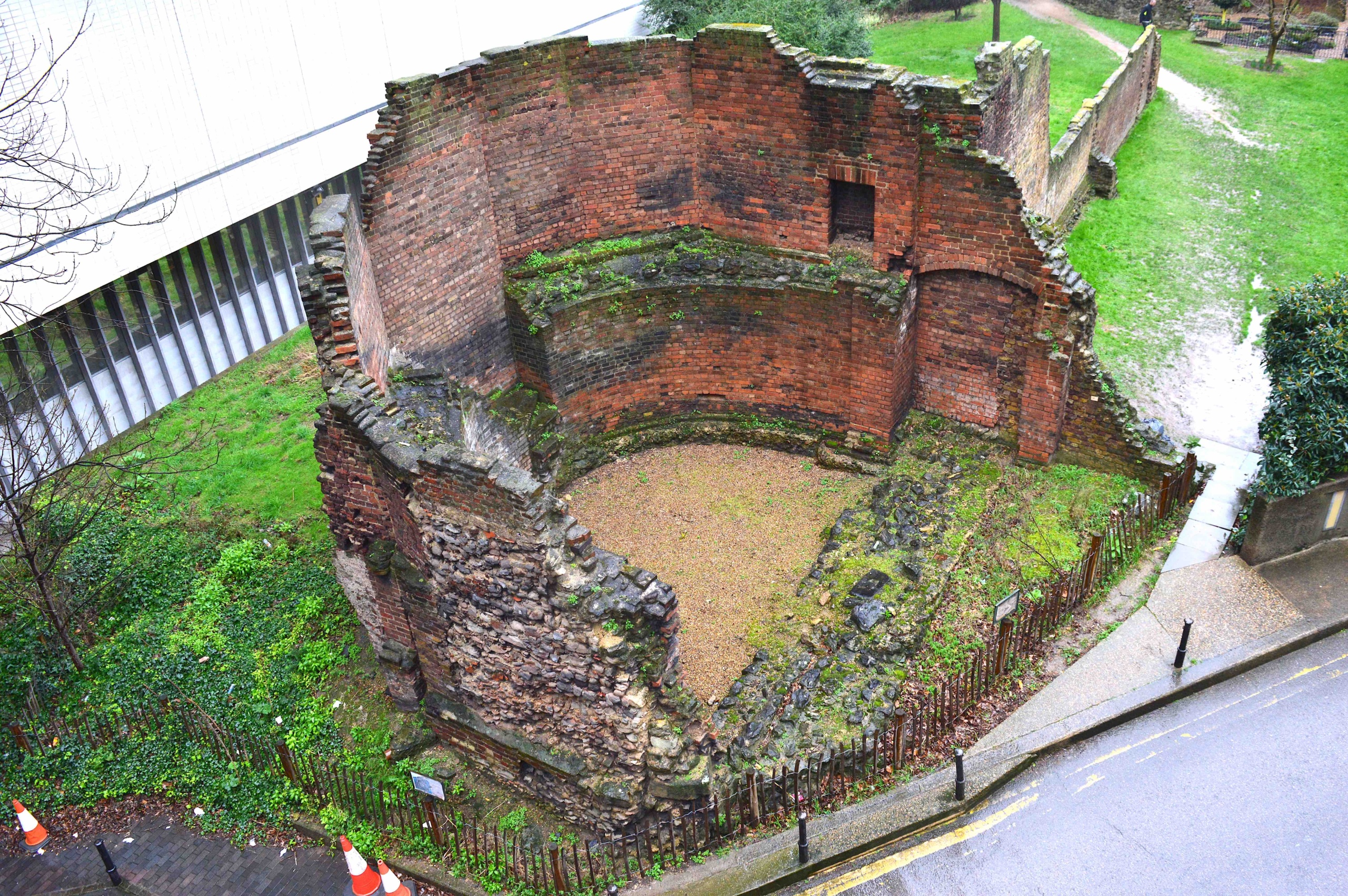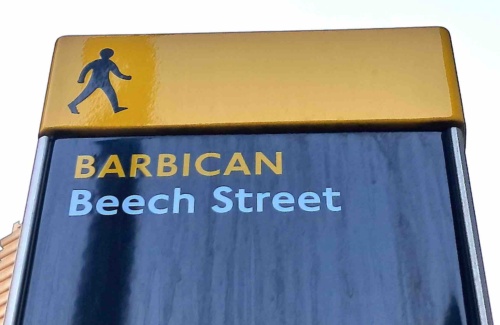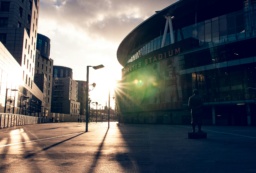What’s in a name? London place names decoded
We’re surrounded by street signs every day and casually type these sometimes odd-sounding addresses into Google Maps without a second thought about what they mean or where the name came from. The Romans founded the city of Londinium [London], so you’d expect a Latin root somewhere. Let’s delve a little deeper into the Roman origins of London street names.
Barbican
The next time you’re out and about in Barbican, remember that this area was once a Roman stronghold. London’s first fort was built here between 110 and 120 AD and the name Barbican derives from the Latin word Barbecana – a fortified outpost, gateway, or tower. The twelve-acre Roman fort was situated in the northwest corner of Londinium, the new town founded by the Romans in 50AD.

The remains of the base of a Roman fort, Barbican
Aldgate, Moorgate, Bishopsgate, Ludgate, Cripplegate
The Roman-to-Medieval city of London was protected by seven defensive gates. Three of those are recognisable today in the names Aldgate, Moorgate, and Bishopsgate. Elsewhere, Ludgate Hill, Cripplegate Cemetery, and Newgate Street are pointers to the existence of Roman-medieval gates no longer in situ. These gates served as administrative entry points for tax collection and controlling who was permitted to exit. So not just keeping out raiders and invaders.
The name Aldgate comes from Alderman’s Gate and refers to the aldermen or senior officials who used this entrance. Bishopsgate has a mercantile connection. In the Middle Ages, it was used by visitors and merchants popping to and from Bishops Stortford. Its gate area quickly became a buzzing trade nexus. Ludgate is named after King Lud, a pre-Roman monarch who, legend has it, founded London and was buried in the area. But there’s no historical evidence he ever existed. Cripplegate comes from the Anglo-Saxon cruplegate, meaning protected tunnel or covered entrance. The Moorgate entrance opened out into the moors beyond the city walls; hence the name. Newgate was used as a prison – a pretty grim one. Its forbidding portcullis entrance was a warning to convicts that this was no typical gateway into the city. You could enter here, but would you ever leave?
Stratford
This multi-ethnic and culturally diverse district in the London Borough of Newham, East London, is home to Westfields Shopping Centre and the London Stadium, West Ham United’s home ground. In Roman times, a shallow river crossing or ford ran through the area and the name Stratford comes from a corruption of the Roman term Straet Forda. The term sounds a little like ‘Street Ford – a ford on a street’. The word street comes from ‘Straet’, most commonly used in post-medieval England for a Roman road. So, Stratford literally translates as ‘a ford next to a Roman road’.This reference to Stratford as Straet Forda is recorded in the Domesday Book [1086 AD].
Fleet Street
This is one of the few surviving Roman roads in London. It’s more commonly associated with the news and print industries that thrived here from the 16th century to late 1980s and is named after the River Fleet, which ran through the city in Roman times. The name Fleet comes from the Anglo-Saxon word flēot, meaning estuary or tidal inlet. In Roman times, the river formed a confluence with the Thames, and when Emperor Claudius invaded in AD 43, he built the first London Bridge at this very point. The London we know today grew from a settlement around this Fleet-Thames confluence. The River Fleet is now an underground river.





